“We create change, we empower, we allow people to tap into their bodies again”: An interview with Locked Down. Locked In. But Living choreographers Jordan James Bridge, Daniel de Andrade and Gary Clarke
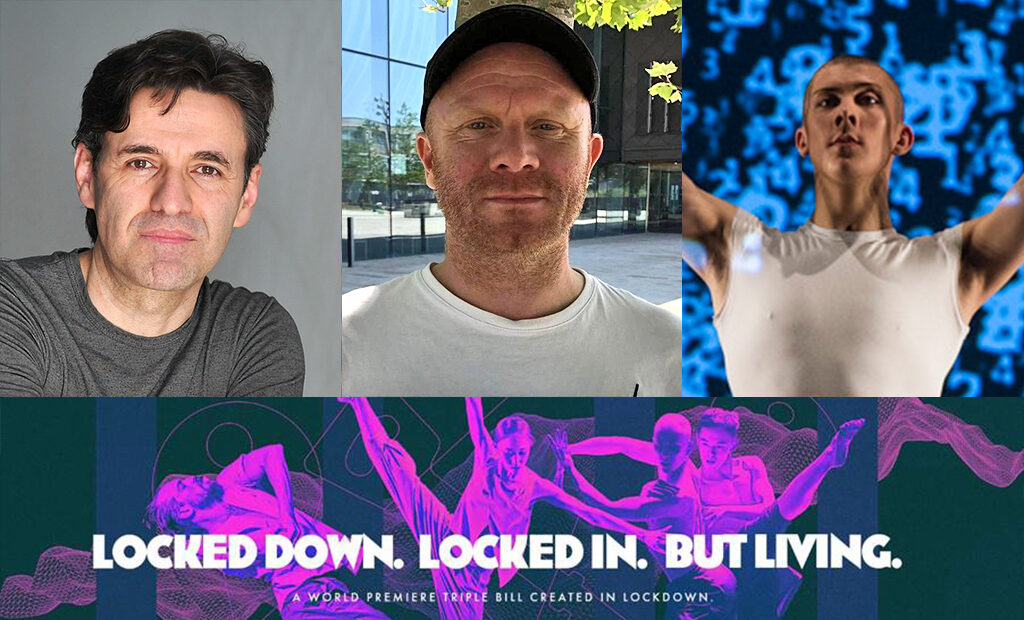
Presenting choreography by Gary Clarke (artistic director, Gary Clarke Company), Daniel de Andrade (artistic associate, Northern Ballet) and Jordan James Bridge (dancer, Studio Wayne McGregor), Locked Down. Locked In. But Living will explore the themes of lockdown and isolation via the creation of site-specific dance works for camera at Huddersfield’s landmark Lawrence Batley Theatre in September.
An award-winning, internationally acclaimed dancer, choreographer and teacher, Clarke is one of the UK’s leading contemporary dance artists, with credits including the 2012 London Olympic Games, various site-specific works, and performances in the most prestigious dance productions of our time.
A former mentee of Wayne McGregor, award-winner and celebrated choreographer and teacher Daniel de Andrade has danced with major international companies including the National Ballet of Portugal, London City Ballet, Zurich Ballet and Scottish Ballet.
Internationally praised for performances including Africarmen (2015), To a Simple, Rock and Roll… Song (2016) and Wayne McGregor’s Autobiography (2017), Jordan James Bridge is a rising star in the ballet world as both dancer and choreographer.
Hello Jordan, Daniel, Gary, great to speak with you. Can you give us some specifics about the works you will choreograph?
Jordan James Bridge: I will be choreographing a contemporary solo on Australian dance artist Izzac Carroll. The piece will be around ten minutes and will be filmed in two locations on site at the Lawrence Batley Theatre.
Daniel de Andrade: Northern Ballet has been commissioned by Lawrence Batley Theatre to create a dance film titled Locked In on the theme of lockdown. It will be just under 25 minutes long using five separate music tracks. At this point I am sadly unable to share the music details, as rights discussions are still being finalised. The cast consists of four dancers who already share living accommodation split as two separate couples and would, within the rapport of the couples themselves, and under current social distancing guidelines, be able to dance freely with each other. We will obviously need to maintain the appropriate safe distance between the two couples during creation and hope to produce group dance sections with the magic of film editing.
Gary Clarke: The work that I am going to choreograph is kind of a response to lockdown in many ways, but the commission kind of covers three areas: “locked down, locked in, but living” – and we have got “but living”, and that really excited me. One of the first things I wanted to do was go into the theatre and see all of the spaces that an audience might not necessarily see backstage. So with the help of the staff we went into the building, and we were in the loft, the cellar, backstage, in the boiler room and all of the nooks and crannies of the theatre. The Lawrence Batley Theatre is an amazing piece of architecture, so I really wanted to try and use that. The work that I’m creating is a kind of site-specific work, looking at that space and also themes surrounding lockdown. I specifically didn’t want to go down a political route, and with a title like But Living I think it kind of opened up many, many doors.
The timing of the commission chimed also with the British Film Institute’s release of the first ever film of Alice in Wonderland, which I believe was done in 1903. There’s one copy of it and it’s black-and-white and all the edges are burned. It basically shows Alice going into Wonderland, but there is such a sense of entrapment and the issue of mental health, and these kinds of different states of being, and I was really interested in that. So the piece I’m making is a kind of backdrop, upside-down modern version of Alice in Wonderland via lockdown, created in and amongst the beautiful spaces at the Lawrence Batley Theatre.
How do you explore the theme of isolation via movement?
JJB: I think this question is definitely down to interpretation of the choreographer. When we first went into lockdown I felt like I was a broken record: wake up, eat, sleep, repeat. Then the rules eased off and I felt much more freedom and normality. My decision to use two different locations on site was to create two different realms within which I can choreograph: a location where we explore repetition in a confined space with heightened sensibility, another to which we have much more freedom within the space and movement vocabulary.
DdA: Lockdown and seclusion basically infringe on our freedoms. There are natural human reactions to that basic loss which are not only strong but also very personal and varied. Those reactions will hopefully instigate and inform the movement in various stages of our piece to represent the variety of feelings we are all experiencing through these times.
GC: What we’re aiming to do is actually use the site itself because some of the areas that we’ve chosen – I think we’ve highlighted five main rooms or areas in the theatre and we’ve also got five staircases that we’re going to use – each one of these rooms has a very restrictive quality. They’re all tight spaces, and one of the main themes to go through the piece is this idea of trying to escape, trying to break out, being alone and secluded in these prison-like spaces, with people in isolation and in solitary areas. So we will explore movement in response to the space and in response to all of the themes that pepper Alice in Wonderland. We’ll be looking at each one of the characters and what they represent, and what mood that brings, and each character will have a colour and a texture. Once we’ve identified what those moods are, then it will literally just be about trying to embody these moods and see how it fits within the space.
Does film add another dimension to dance, transform it, or simply record it?
JJB: I think it could both add another dimension and transform it, but this is within the filming and editing process. I think it’s super important to collaborate with the cinematographer to make your imagery come to fruition. If filmed solely on a tripod, sometimes it can make the image seem two-dimensional. So the use of moving shots always allows the audience to feel as though they are there in the environment with you.
DdA: Live dance is wonderfully powerful in its own right but it also translates incredibly well into film and indeed it can be richly enhanced with a collaboration with the videographer. Film adds dimensions that can stretch reality and maximise the possibilities for ideas to help bring the viewer much closer to the heart and atmosphere of the piece. It is super exciting to create dance knowing that it can be manipulated through film to bring the performers’ vocabulary to the viewers as a more intimate exchange than would otherwise be possible.
GC: Yes, film adds a whole new dimension. As a choreographer that likes to experiment with all different art forms, I saw this as an opportunity not to just create a dance work and then film it, but to make a dance film. So they are two very different things. As I’m making the work I will always be looking at it through the eye of the camera, and I’m excited to be playing with this idea of proximity, close-up, angles and perception – where the camera would be, and how that’s recorded. Again with these amazing spaces, it is beautiful architecture that we’re going to capture on the screen. So it’s not just about movement. For me it is that the whole choreography lies within the film, within the lens – how things are positioned and the frame that it sits within; how close up or far away we are to the action; how much of the action we actually see. So film will be the main focus. I’m not interested in creating a big dance piece and then just filming it – because then it feels that we’re not really using the medium of film so much. There are so many different dimensions, and I’m interested in how that is edited as well. So once we get all of the footage, when we start to look at it, we want to see what it looks like on the screen. I’m interested in using effects such as fast-forward and reverse, doubling up the image, turning images upside down, changing the perception again, playing with filters, playing with transitions and edits – and for me this is all choreographic. So as a choreographer I’m looking forward to exploring more the choreographic film element of that.
The pieces will be choreographed in isolation. I assume this means each will be performed and filmed independently. Or will there be any collaboration between you?
JJB: The collaboration will be with the choreographer, dancer and filming team. I will be rehearsing at Studio Wayne McGregor in London with Izzac, we will then arrive at the Lawrence Batley Theatre in Huddersfield on our chosen filming day to make this choreography come to life.
DdA: The three pieces of this triple bill will indeed be created separately. The subliminal collaboration between each piece is something that is unknown to all of us until everything is revealed as finished works, but I believe it does exist. Within each group there is a lot of collaboration already in place – virtual, or live when safe – between all the elements which must come together to realise a dance piece, be it technical, stage management, wardrobe, etc. We are certainly bound by the same encompassing title, Locked Down. Locked In. But Living, and a most intimate collaboration usually happens between choreographers, composers and dancers. As we are going through unprecedented circumstances we will adopt and discover our own individual paths to produce the pieces, hopefully finding new and exciting ways to create dance safely, until we are free to roam our theatres as performers and audiences.
GC: As I understand it we’re all creating our own individual responses with the titles that we’ve got, so there’s no direct collaboration with all three choreographers. But what does link us is the themes, the location and the filmmakers, so I guess with those elements pulled together hopefully it will make for some sort of cohesive triple bill. But one never knows. We shall have to wait and see where the collaboration – or the crossover – happens.
The ballets will consist of site-specific works around the Grade II listed building which houses the Lawrence Batley Theatre. Can you elaborate on this, on the locations?
JJB: I think this is a very exciting opportunity to pull away from the main stage at LBT and showcase the beauty that the building holds. I, The Northern Ballet and Gary Clarke Company have all been asked to consider using unconventional spaces around the building – staircases, the courtyard, offices, the exhibition room, the cellar, toilets, anything! I think it will be interesting to see which space each choreographer has chosen to work with and how it will affect their work.
DdA: My first thought about this was that there is something incredibly poignant about creating dance films about lockdown by setting it within the creatively rich environment of a theatre. One of the exciting elements of this commission is that we have been encouraged to feature the various spaces of the Lawrence Batley Theatre. I believe each choreographer will discover unique spots of the theatre which will enrich their individual works. I have performed at the LBT as a dancer with Northern Ballet and I know well that there are beautiful locations both outside and inside the building. My intention is to make sure that once our piece is finished, from the LBT’s trusted audiences’ point of view, there will be no doubt that it had been filmed within its beautiful settings.
GC: It’s fair to say that I don’t create ballet. I am not from ballet, and never claimed to be from ballet. I work in contemporary dance theatre, and that’s what I’m trained in.
We will be animating areas such as the cellar – where the audience would sit they have a mechanism where you can bring down the seats. Underneath that is this amazing labyrinth of metal and wires, and it’s just beautiful and its bright yellow, so we’re going to be animating that area. We’re going to be animating areas up in the loft. They’ve got this beautiful old wooden maze in the loft with all these wooden slants coming down – it creates amazing daylight through the skylights. We’re going to be animating that. We’re going to be looking at the boiler room, which is all metal and has references to time and clocks. They’ve got some amazing staircases in there, so we’re going to be looking at all of their stairs and animating those in various different ways. There are some beautiful doors which we’re going to be looking at. So we’re pretty much animating the whole theatre other than the stage, which I really like. I love that we are not even entertaining the stage. For me that’s where live theatre belongs and not film.
Living through a pandemic has impacted us all. Apart from not being able to perform live, how has the dance world been affected by it?
JJB: Severely. The arts have been hit incredibly hard during this pandemic, it’s not only dancers and their national and international touring work, it’s the team we need to make these shows happen: costume designers, lighting technicians, stage managers, sound engineers, musicians, makeup artists, singers, producers and many more. The arts sector has a disproportionate percentage of freelance workers, so it’s been an incredibly difficult time for all. But it’s important for us all to keep pushing our creativity for when we can open our doors to invite audiences in. However, if anybody knows how to hustle it’s the freelancers of the industry.
DdA: To be able to train, rehearse and perform dancers need big and appropriate spaces and have to come into very intimate contact with one another. In the case of a ballet company one can share very close contact with a lot of people in one day. For up to 8 hours per day dancers push their bodies to the extreme and this physical exertion involves a lot of heavy breathing and sweat. This means that not only we have not been able to perform but we have also not been able to train, create nor rehearse. The “bums on seats” term is a perfect analogy for what our audiences mean to our industry. They are the lifeblood of our art form, and overnight our ability to work has completely been taken away. It is important to mention that the pandemic has severely affected professions and industries across the board and dance, along with all the performing arts, has also suffered greatly. It is nothing short of a disaster and we have to brace ourselves and be very supportive of one another until life gets back to its free flow again.
GC: The dance world has been affected hugely. I think one of the main things is the fragility of the arts and how that impacts financially on people. The arts are full of freelancers working short contracts for very little money. We saw how quickly that can disappear and how difficult it now is to rebuild that. So it’s been affected in many ways. People have now had to take up other work to find money, other jobs that they don’t want to do, just as a way of living. It’s really affected many people on many different levels. I know there is a nervousness and apprehension about the future because we’re not sure if things can rebuild, or if organisations are going to have the capacity to fund and commission people and provide space and time. It’s already very competitive, and I think Covid is just going to create more anxiety and more competitiveness, leaving more people unemployed.
I wish I could be more positive. I think what the Lawrence Batley Theatre is doing is amazing, because so many people don’t have the capacity, funds or resources to be able to do this. It’s tough. Also the live element of touring work has been affected – theatres, that’s what we do. And the studios – we as dancers work in dance studios and have not actually been able to go in there and deliver classes. So people’s teaching work, that’s all gone. It’s very hard to social distance if you’re a dancer in a small studio. So the health and wellbeing of people has been really affected, as well as those the teachers would teach, because they obviously haven’t got access anymore to these classes. So the ripples are huge.
Jordan, you are among the youngest choreographers in the UK. Is your youth a factor in your approach to the art? Are you an innovator?
JJB: I’ve always wanted to be a creator but wanted to achieve my professional dancing career first. I have been dabbling in choreography alongside my performing career for a few years now and I think it’s the right time to share. I would say for this specific commission, one of my music choices showcases my youth. It’s an incredibly hard-hitting electronic track by Scottish trans artist SOPHIE. I am in love with her music and it really inspires me to generate movement differently. I’m heavily influenced by musicality and musical intonations, which is something that has always been a strong attribute of mine when creating.
Regarding this production Wayne McGregor said: “We dance to move you and Jordan’s choreography touches raw.” Can you describe what that means to you?
JJB: Tough question! I think that for me this means my approach to creation. During creative processes I have quite an ambitious way of generating movement. I’m a huge fan of risk-taking and of always trying things out. Trial and error are a creator’s best friend.
Gary, you were part of Matthew Bourne’s world tour of his brilliant and critically acclaimed New Adventures all-male version of Swan Lake, which must have been thrilling. Is dance as exhilarating for you as choreography? Which is your first love?
GC: Yes, I was part of Matthew Bourne’s all-male Swan Lake, which was amazing. I come from a very small mining village called Grimethorpe on the outskirts of Barnsley, so I never expected that I would be touring the world with one of the most famous controversial ballets to date, and it’s an amazing memory for me, looking back. It changed my life, it changed my career. I’d never really travelled before that, so I got to see the world, I got to tour with amazing people. It taught me how to be a professional, about operating, about practice, about having to deliver high quality work at a very high standard, time after time after time. Yes, it taught me a lot. An amazing experience which I’ll never forget. I had a really fantastic career as a dancer and I was very lucky to be able to work with some of the UK’s leading choreographers, all who have inspired me. I’ve performed for the best part of 20 years doing work ranging from small works to site-specific works to big touring work, so I feel like I’ve done my job as a performer. I’m really satisfied with what I did. I worked with the people I wanted to work with; and now I have the same buzz and the same passionate feeling for choreography as I did when I was performing. So it’s not about what I prefer, but rather I feel there has been a natural shift in my focus and passion. I’ll always love dancing and I’ll always love dance-making, and for me they go hand in hand.
Last year in describing your show Wasteland – about rave culture in the devastated late 80s West Yorkshire of your youth – you said: “Our generation had to find a way of coping. The alternative to fighting or arson was getting your frustrations and anger out on the dance floor.” How do you think we are coping with this pandemic now, and how can this be expressed through movement?
GC: This is a funny one. I can’t really answer this one, because it’s too soon… Well, I think lockdown and the pandemic have had a huge effect on everybody in a very negative way, even though a lot of positives have come out of them. I do think that it has affected people’s wellbeing, health, physical awareness, mental state, emotional stability, financial stability… How we can express this through movement? It’s too soon and too raw for us to be able to process that. That’s something I didn’t want to do in this commission because I think it’s too present, and I just think we’ve got to be careful that we don’t start to engage too quickly with things that are still very raw. I’m a choreographer that really likes to go deep and go in on things, and at the moment everyone’s just feeling so fragile – including myself – that I don’t want to entertain that yet. But who knows, in the future it might be something that I will delve further into emotionally.
Daniel, you specialise in narrative dance. Can you describe the kind of narrative you would use for this project?
DdA: Yes, at Northern Ballet we are usually transposing wonderful and well-known stories into pioneering dance scenarios for our productions. But I am also of the opinion that there is a narrative in every kind of dance style. After all it is a very powerful language common to all human beings. Specifically for this project, the research will hopefully lead us to ask how we have felt about the pandemic, the lockdown, isolation, but also what it has done for us in terms of our inner reflection, self-control, sympathy, solitude, creativity, slowing down from our manically fast life style and especially in the struggle to help one another to survive it… We are all living all of this right now and it can be distilled into subconscious outlooks without the need for a linear story as such. We can all relate to all the different ways we humans are finding to express this.
You are artistic director of Northern Ballet’s Children’s Ballets. How does working with child dancers compare with choreographing adult performances?
DdA: Our Children’s Ballets project is one of our very successful specialities totally dedicated to introducing children not only to ballet and live dance but also to appreciating live theatre and live music. As it happens, although these ballets are especially created for children, it is still created with and performed by our professional dancers.
Are there artists who have particularly inspired you, your work?
JJB: Musicians such as Ben Frost, Bicep, SOPHIE, Nils Frahm, Sigur Rós, Eskmo, Vivaldi, Jed Kurzel. They all play a huge part in my everyday life. I listen to their music on the way to work, whilst warming up, on the way home, in the studio when creating. Music is an incredible outlet for me to bring my ideas to fruition. Choreographic-wise, I would say I’m inspired by very different artists, just like musicians: Damien Jalet, Alexander Ekman, Wayne McGregor, Sharon Eyal, Merce Cunningham. They all bring something so special to the process and it’s incredibly inspiring.
DdA: I have always been quite a sensitive person. I was introduced to ballet and structured dance comparatively late in life. That said, I have always been moved by all kinds of art forms from an early age. For me music comes first, always music first – and then it’s about what it does to instigate reactions from our bodies and inner selves. I have been inspired by countless artists of various modalities throughout my life, so much so that I would be reluctant to single out or favour any separate names, famous or otherwise. I am super lucky to work with dance and be surrounded by and exposed to a variety of artists. In truth I am inspired on a daily basis and I absolutely love working with dance and in theatrical settings for that very reason.
GC: When I first entered the dance industry people that really inspired me were dance-makers that had come from the 1980s, which was a very political time in Britain, so the works of Lea Anderson and the Cholmondeleys, DV8 Physical Theatre, Michael Clarke Company, Matthew Bourne, Javier De Frutos, Wendy Houstoun and Nigel Charnock. There were some fantastic political works coming out and they really, really inspired me. I was a political teenager, so that really opened my eyes and made me want to create work in a similar way.
Do you have ideas for future projects you’d like to share?
JJB: Currently my performing career is at the forefront for now, but when the time is right I’ll approach my choreography the same way I do with my dancing, fearlessly and willing to experiment.
DdA: Immersed in ideas… always!!! The season is just now restarting for us and we are making sure that our return is safe and robust. With fingers crossed, the whole situation will hopefully continue to improve until theatres reopen. As it is the case for many, I do have a project on hold due to the pandemic, but I hope it is only a question of time until I will be able to announce details of this production. I am very excited with this opportunity to create Locked In during what are difficult and dry times for artists everywhere. I hope that through this creation we can contribute somewhat to the understanding of our ongoing experience of the lockdown.
GC: Future projects: I’m the artistic director of Gary Clarke Company. We’ve just had two amazing tours of a work called Coal and a work called Wasteland, which went really well. My next project is looking at Section 28, which was a clause that was brought in in the late 80s, which basically impacted the whole gay community – the LGBT+ communities – in quite a negative way. So my next work will be looking at that. And I’m also about to launch GCC Digital, which is a new online program of activities and events for people to get involved with on a digital platform. So keep your eyes open for that.
Art is potentially instinctive, emotional, subconscious. Dance combines the visual with sound and theatrical expression. Do you think as a medium it has the power to change us?
JJB: I feel if you don’t think these things then you’re shutting yourself off from the beautiful insights that dance can offer. Dance is such a huge umbrella of creativity that I think it’s hard to say that there isn’t going to be somebody’s work that will touch you and possibly impact change. To cut yourself off from that possibility is to rob yourself of an experience that I think everyone should have at least once in their life.
DdA: We are an art-making and art-consuming species. Without even realising, we are constantly imbued with art on a staggering level – uttering a word, choosing colours, garments, our music, our films, our celebrations, and so on… Art is lived as our purest way of expressing and communicating from within; feelings, thoughts and dreams which become ideas that influence or create the reality we inhabit. Dance is an incredibly powerful art form. As you say, it strikes our visual-audio receptors and are made even more potent with theatrical expression to touch us within many different aspects of our selves. As it is, music alone already moves us in a very intimate and powerful way. Dance still allows music to do its thing while becoming music itself, in the case of a performer, going through his/her body, mind and inner self in responsive movement. In the case of the viewer, dance becomes the music that he/she sees, like living, breathing and transforming sculptures. I believe that art has always had huge power to change us and dance is way up there in that respect. As the cliché goes, with great power comes responsibility… and I believe that in creating and consuming art it is our responsibility to bring those dreams from the collective unconscious to change us and our environment, always promoting evolution to better serve the moment we are living in.
GC: Do I think dance as a medium has the power to change us? Absolutely and it’s been proven, and now more than ever I think dance has become much more accessible. People are doing some amazing projects with all different kinds of communities – adding to people’s physical awareness, mental awareness, emotional awareness and creativity. Many of my peers work with people with dementia, disabilities, and all sorts of different communities – I say they, but I do also. We create change and we empower and we give people the ability again to tap into something with their bodies, which I think is really important. On that level I think it’s incredibly powerful.
At the end of the day it’s movement. The minute we’re born we begin moving, so dance for me is just an extension of that. Also what we do with our bodies in performance as well I think is a great tool for education, entertainment – a way to inspire and influence people, provide them a form of escapism – and to see athletic bodies onstage being expressive, to see what the body can do in creative situations and in response to subject matters, I think is incredible. So I do believe, yes, that dance is a medium that has the power to change us.
Gary, Daniel, Jordan, thanks so much for your time.
Catherine Sedgwick
Featured image: (L-R) Daniel de Andrade, Gary Clarke, Jordan James Bridge
For further information about Locked Down. Locked In. But Living visit the Lawrence Batley Theatre’s website here.

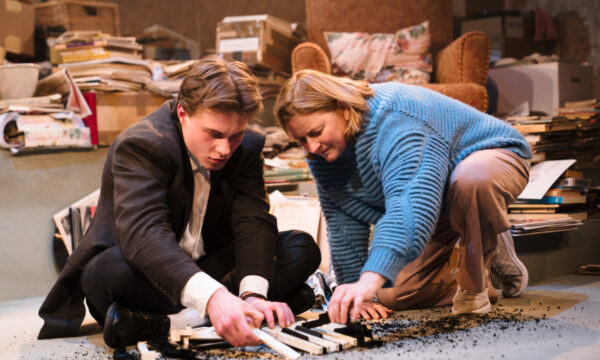
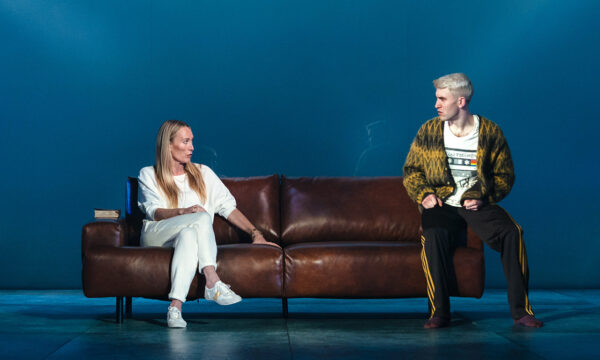
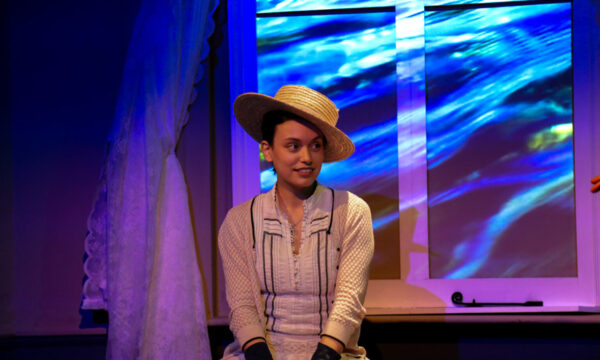
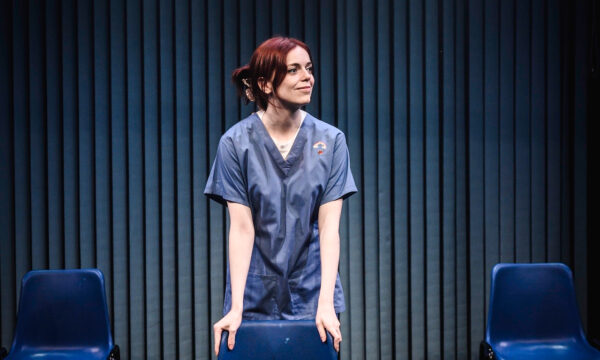
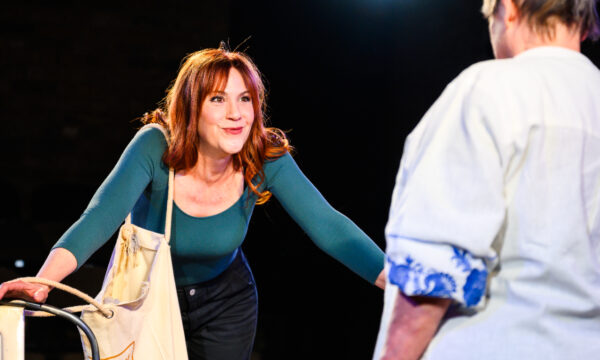
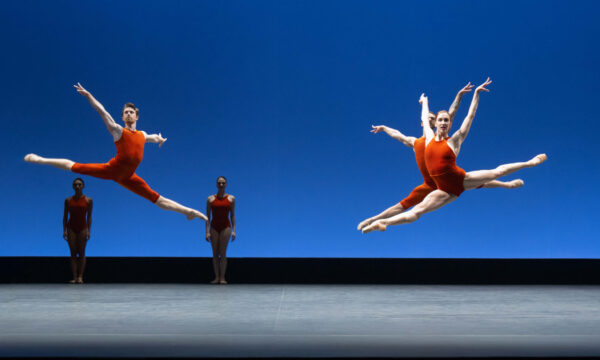
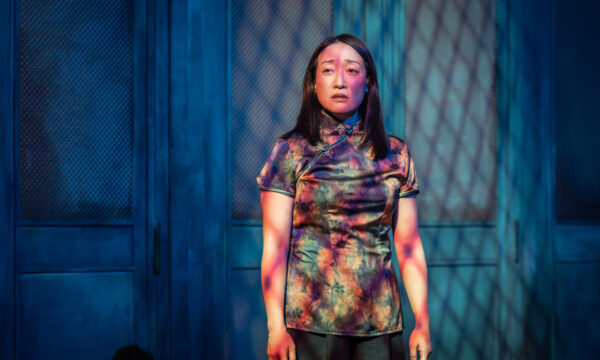
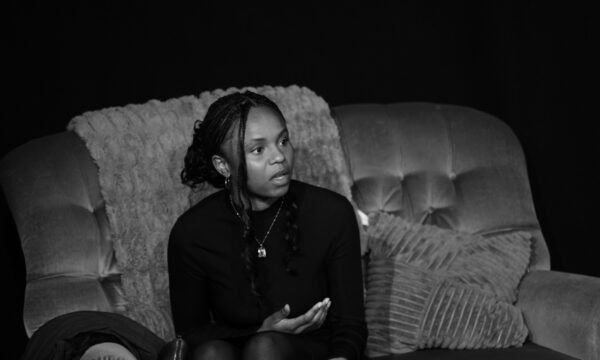
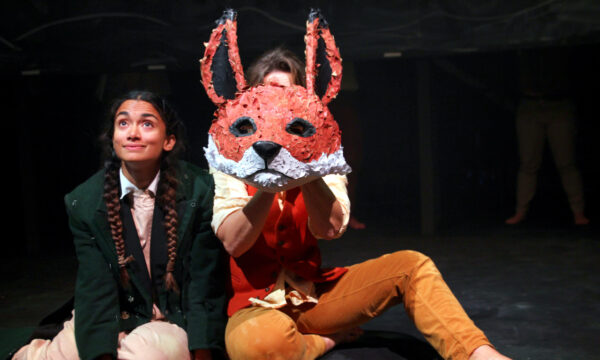







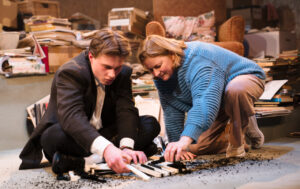
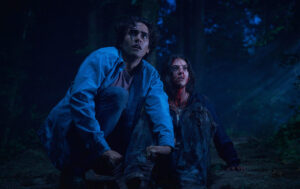
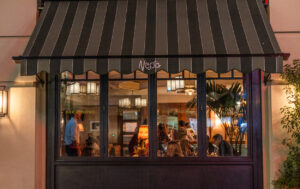



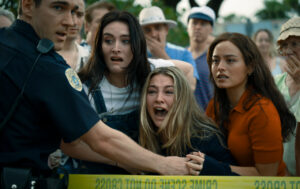
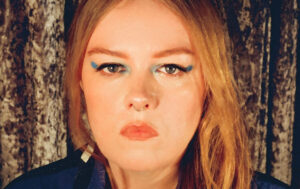
Facebook
Twitter
Instagram
YouTube
RSS